Temperature Sensors
Temperature sensors are used in numerous applications for sensing temperature and providing control signals based on the change in temperature or upon reaching a certain level of temperature etc. There are numerous types of temperature sensors classified based on their operating principles, applications, accuracy etc. Different types include pt 100, pt 1000, thermocouple etc. for a variety of applications and temperature range from -200 Degree to 1600 Degree Centigrade (-328°F to 2912 Degree Fahrenheit).
How to select a Temperature Sensor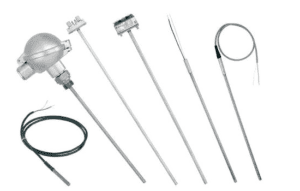
Major technical parameters for selection of such sensors are a range of temperature to be measured, accuracy of measurement, response time, type of output signals etc. Such temperature sensors are being supplied for critical applications such as cold rooms, medical refrigerators, nitrogen tank, cryogenic systems, warehouses, oil pipes, furnaces, ovens etc.
Types of Temperature Sensors
Temperature is the most measured parameter in the world and hence have numerous types of sensors to measure temperature.The classifications are based on their operation principle, the range of measurement etc.
Few of different types of temperature sensors are: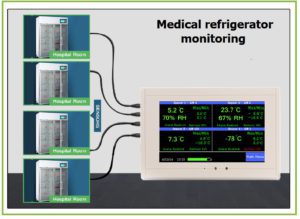
- Thermocouple sensor- Two dissimilar metals are joined which produce a small current variation when temperature changes
- pt 100, pt 1000 etc. are another type of temperature sensors which vary its resistance based on temperature
- Electronic temperature sensors – These are small IC chips which measure the temperature and transmit to a measuring device.
- WiFi Temperature Sensors
- Ethernet connected temperature sensors
- Thermistor sensors
- Non-contact temperature sensor (Infrared sensing)
- Remote temperature sensor
- Resistance temperature sensors
Temperature sensors from -200 ° C to 1600 °C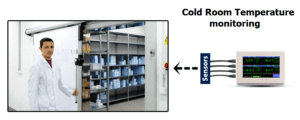
The main principle of temperature sensors is that the resistance of an electric conductor varies with respect to the temperature. Thus by measuring the changes in resultant current, the temperature can be measured.
These are one of the most elementary sensors and probably the first generation of sensors across the entire category of sensors. Measurement and monitoring of temperature is a basic requirement in various industrial, commercial and residential applications. Temperature sensors are available from -200 °C onwards to 1600 Degree Centigrade. Even though there is no clear cut definition, as part of environment sensors, the range may be defined to be limited to approximately -50 °C to +70 Degree Centigrade (-58 °F to 158 Degree Fahrenheit) The rest of the range will be more useful in the industrial segment.
Sensors in this measurement range usually use direct element sensor which produces a variation in electric current in proportion to the temperature.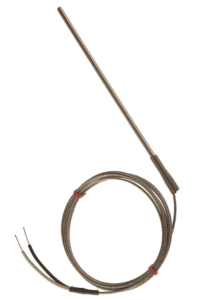
Temperature sensors and monitoring system for cold rooms, nitrogen tanks, warehouses etc.
We supply a wide variety of temperature recording and monitoring system for the following applications.
- Temperature monitoring system for medicine cold rooms, vaccine freezers, blood banks, plasma freezers etc.
- Temperature and humidity monitoring systems for warehouses storing medicines, fruits, vegetables, chemicals etc. with a phone call and SMS alerts.
- Temperature recording system for medical refrigerators with phone call alerts.
- Temperature recording system for furnaces, kilns etc.
Features of temperature monitoring systems for cold rooms, nitrogen tanks, warehouses etc.
The major features of our systems are as below:
- Some of the models are capable of continuous recording even in the case of a power failure.
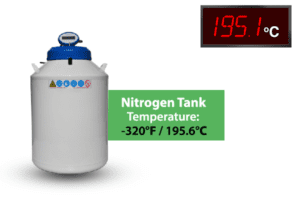
- There are different models available which transmit the data through WiFi, radio frequency, Ethernet Lan cable etc.
- The device can record the data on the device as well as over the internet for remote viewing.
- Different options are available for phone call alert, SMS alert, email alert etc.
- The user can combine other alerts such as water leakage alert, power failure alert etc. in the same system.
- Most of the models are certified under 21 CFR Part 11, CE etc.
Heat sensors for high-temperature applications
Heat sensors are basically a higher version of temperature sensors for industrial purposes especially for measuring high temperature. The heat can be generally defined as anything upwards from 50 Degree Centigrade (122 °F) up to a maximum of around 2400 Deg C (4352 °F). The higher the temperature, the heat sensor becomes more complicated since the sensor itself shouldn’t get damaged at higher temperatures. For higher temperatures, thermocouples and special of pt100 sensors are used to measure the temperature. Please see our separate session on the pt100 sensor in this page. For a heat sensor to measure 2400 Deg C, a thermocouple of Tungsten Rhenium combination is used.
Pt100 sensor for temperature measurement
Pt100 is the most common type of temperature sensor. As explained previously these sensors also work on the principle that the resistance of a conductor varies as per the temperature. Pt 100 sensor is made of platinum which has the resistance of 100 Ohms at zero Degree centigrade and 138.4 ohms at 100 °C.
Pt100 sensors are used for a temperature range of 250 to +900 °C approximately. The variation of resistance across this entire range of temperature is linear in nature and is derived from the respective resistance and temperature graph. Platinum has a high temperature withstand capacity for very high temperature and hence makes it suitable for very high-temperature measurement.
Other sensors on this principle are pt500 sensor, pt1000 sensor etc. pt100 sensors are formed as a probe and are inserted or affixed to the surface to be measured.
These type of pt sensors are also known as RTD (Resistance Temperature Detector). Generally, all type of heat sensors which are based on the principle of resistance is known as RTD. pt 100 sensors are also known as platinum RTD sensors.
